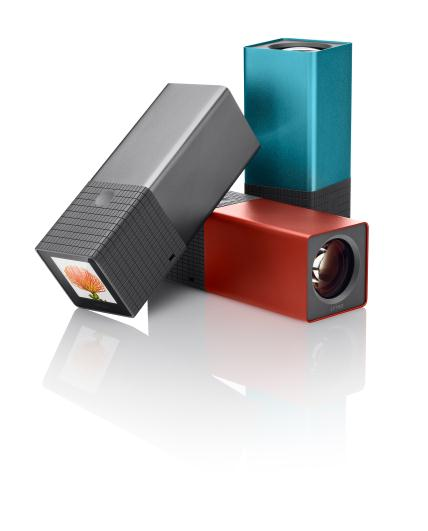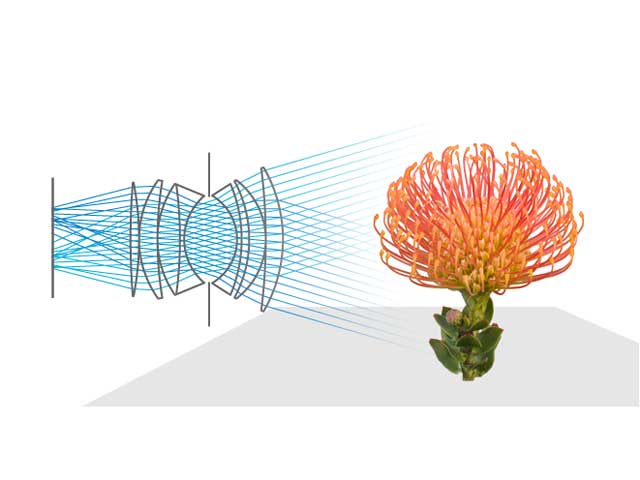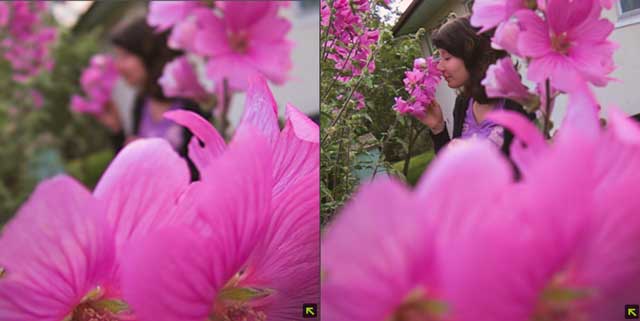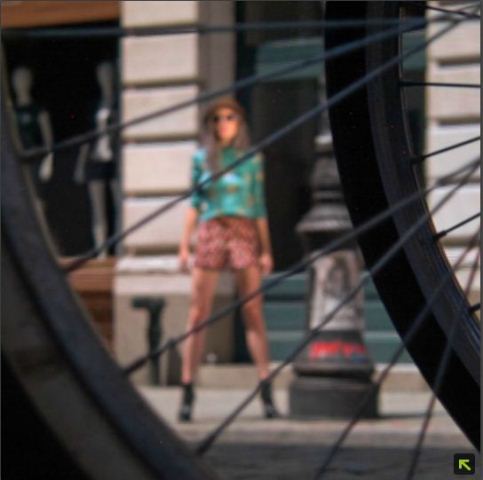Adelson and Wang proposed the design of a plenoptic camera that can be used to significantly reduce the correspondence problem in stereo matching. To achieve this, an array of microlenses is placed at the focal plane of the camera main lens. The image sensor is positioned slightly behind the microlenses. Using such images the displacement of image parts that are not in focus can be analyzed and depth information can be extracted. Potentially, this camera system can be used to refocus an image virtually on a computer after the picture has been taken, as explained by Ng et al. The drawback of such a system is the low resolution that the final images have. As one microlens samples the light directions at one spatial point an increase in the number of image pixels can only be done by increasing the number of microlenses by the same amount. To overcome this limitation, Lumsdaine and Georgiev describe a new design of a plenoptic camera, called focused plenoptic camera where the microlens array is positioned in front of or behind the focal plane of the main lens. This modification samples the light field in a different way that allows to have a higher spatial resolution by having a lower angular resolution at the same time. With this design images can be refocused with a much higher spatial resolution. However, the low angular resolution can introduce some unwanted aliasing artifacts. A different design using low cost printed film (mask) instead of microlens array was proposed by researchers at MERL in 2007. This design overcomes several limitations of micro-lens array in terms of chromatic aberrations, loss of boundary pixels and allows higher spatial resolution photos to be captured. However, a mask based design reduces light compared to micro-lens arrays.
Plenoptic cameras are good for following moving objects. A recording from a security camera based upon this technology could be used to produce an accurate 3D model of a suspect.
Ng commercialized his research into a new company, Lytro, that has developed a consumer light-field "digital camera capable of capturing "living images" that can be infinitely refocused after capture".
The Adobe light-field camera is a prototype 100-megapixel camera that takes a three-dimensional photo of the scene in focus using 19 uniquely configured lenses. Each lens will take a 5.2 megapixel photo of the entire scene around the camera and each image can be focused later in any way.
The CAFADIS camera is a plenoptic camera developed by the University of La Laguna (Spain). CAFADIS stands for phase-distance camera, since it can be used for distance and wavefront estimation. From a single shot, they estimate several photographs refocused at different distances, depth maps, all-in-focus images and stereo pairs. A similar optical design can also be used in adaptive optics in Astrophysics, in order to correct the aberrations caused by atmospheric turbulence in telescope images. In order to perform these tasks different algorithms, running on GPU and FPGA, operate on the raw image captured by the camera.
Mitsubishi Electric Research Labs (MERL)'s light field camera is based on the principle of optical heterodyning and uses a printed film (mask) placed close to the sensor. Any hand-held camera can be converted into a light field camera using this technology by simply inserting a low cost film on top of the sensor. A mask based design also avoids the problem of the loss of resolution, since a high resolution photo can be generated for the focused parts of the scene.
Lytro and Raytrix are 2 companies commercializing the camera technology, with Raytrix being the first to market.
Plenoptic cameras are good for following moving objects. A recording from a security camera based upon this technology could be used to produce an accurate 3D model of a suspect.
Ng commercialized his research into a new company, Lytro, that has developed a consumer light-field "digital camera capable of capturing "living images" that can be infinitely refocused after capture".
 another light field camera |  Lytro Light Field Camera |  The Lytro light field camera |  How much do Lytro cameras cost |  Lytro light-field camera |
 Lytro Light Field Camera: |  Lytro Light Field Camera |  Lytro light field camera, |  Lytro\x26#39;s consumer light field |  But, LYTRO LIGHT FIELD CAMERA |
Mitsubishi Electric Research Labs (MERL)'s light field camera is based on the principle of optical heterodyning and uses a printed film (mask) placed close to the sensor. Any hand-held camera can be converted into a light field camera using this technology by simply inserting a low cost film on top of the sensor. A mask based design also avoids the problem of the loss of resolution, since a high resolution photo can be generated for the focused parts of the scene.
 Light Field Camera |  lytro light field camera Lytro | light field camera. |  lytro-light-field-camera Lytro |  Lytro Light Field Camera |
 This is a Lytro light field |  Lytro launches Light Field |  The Lytro camera features a |  lytro-light-field-camera- |  lytro light field camera |
No comments:
Post a Comment